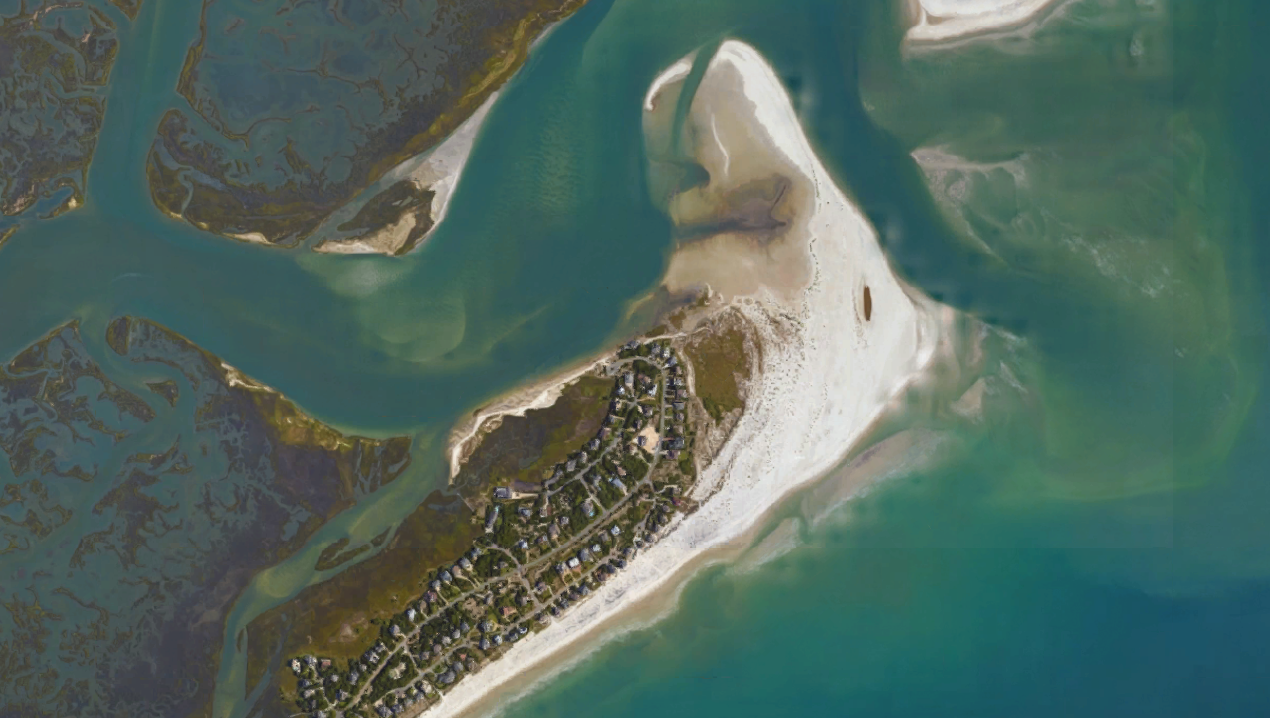By Elly Colwell
Intern
Figure Eight Island homeowners will vote on whether to fund an erosion-control project that has ignited opposition due to the impact it could have on the island’s wildlife habitats.
Last week, the Figure Eight Homeowners Association sent out a ballot to homeowners seeking approval to finance a terminal groin on the island, which the association’s administrator said would prevent the southward shifting of Rich Inlet on the island’s north end.
A terminal groin is a jetty-like structure made from rocks, steel and concrete that prevents erosion through a loose-rock structure that extends seaward and allows sand to wash back and forth, which proponents say helps prevent down-shore erosion. However, environmental advocates say the structure would destroy the habitat of birds that nest on the north end.
The island’s homeowners association is seeking a permit from the U.S. Army Corps of Engineers to build the structure, but first it must demonstrate that it has raised the funding to build the $2 million-$4 million project, which would be fully paid for by the island’s residents.
“The state permit requires that we must provide financial assurance for all aspects of the project,” said David Kellam, Figure Eight Island Homeowners’ Association administrator. Homeowners will receive a ballot by mail and have until the end of October to return it, allowing approximately 45 days for a response.
The association will also mail a letter that expresses some of the island homeowners’ objection to the plan.
The association’s contractor sent a separate publication voicing certain homeowners’ objections to the plan. The opposition signals that this is a controversial issue with both environmental and economic concerns.
When the Army Corps of Engineers hosted a hearing in September 2015 on the project, opponents of the groin argued the structure would ruin the nesting habitat of as many 90 migratory species of birds at the north end of the island and destroy the beauty of Rich’s Inlet.
Opponents, including the N.C. Coastal Federation and the Southern Environmental Law Center, have claimed in past forums that the groin isn’t necessary because the southern migration of the inlet has ceased. Also, coastal advocates have argued that more temporary solutions, like sandbags, do a better job of slowing erosion without risking the effects of a permanent structure.
However, Kellam said the terminal groin is the best option for combating the erosion that threatens the 19 homes on the north end when the inlet migrates south, which will inevitably occur again in the future.
If approved by the Army Corps of Engineers, the groin would be constructed at the earliest in November 2017, Kellam said.




